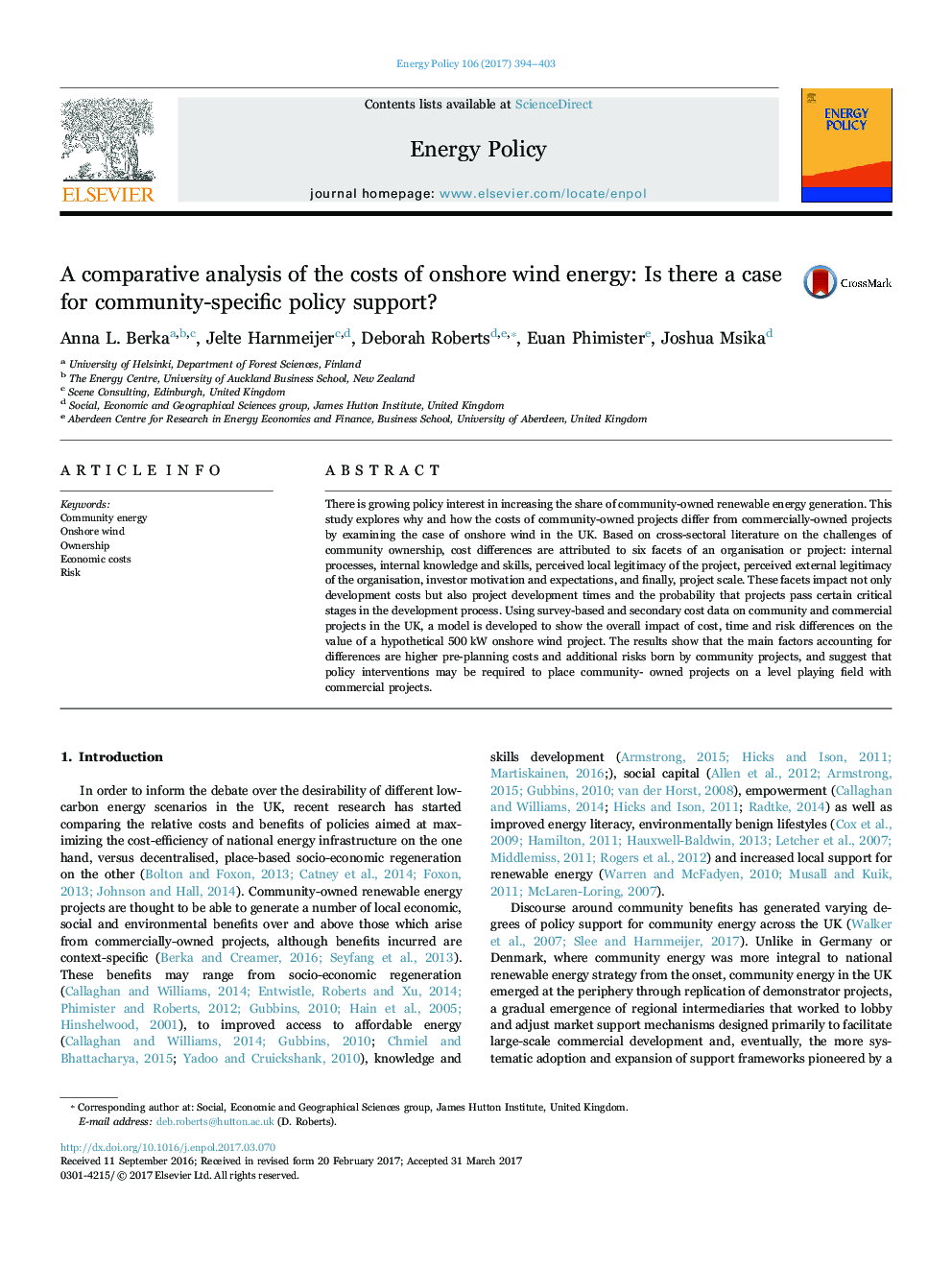| Article ID | Journal | Published Year | Pages | File Type |
|---|---|---|---|---|
| 5105782 | Energy Policy | 2017 | 10 Pages |
Abstract
There is growing policy interest in increasing the share of community-owned renewable energy generation. This study explores why and how the costs of community-owned projects differ from commercially-owned projects by examining the case of onshore wind in the UK. Based on cross-sectoral literature on the challenges of community ownership, cost differences are attributed to six facets of an organisation or project: internal processes, internal knowledge and skills, perceived local legitimacy of the project, perceived external legitimacy of the organisation, investor motivation and expectations, and finally, project scale. These facets impact not only development costs but also project development times and the probability that projects pass certain critical stages in the development process. Using survey-based and secondary cost data on community and commercial projects in the UK, a model is developed to show the overall impact of cost, time and risk differences on the value of a hypothetical 500Â kW onshore wind project. The results show that the main factors accounting for differences are higher pre-planning costs and additional risks born by community projects, and suggest that policy interventions may be required to place community- owned projects on a level playing field with commercial projects.
Related Topics
Physical Sciences and Engineering
Energy
Energy Engineering and Power Technology
Authors
Anna L. Berka, Jelte Harnmeijer, Deborah Roberts, Euan Phimister, Joshua Msika,
